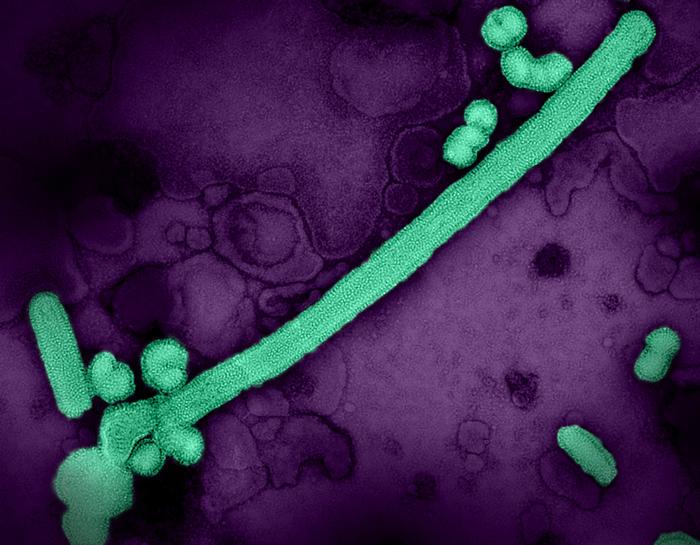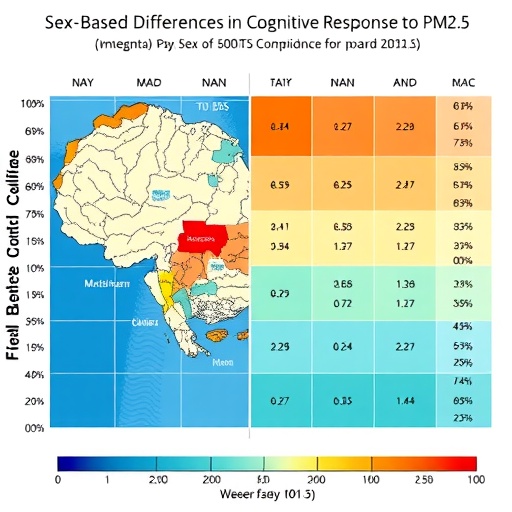In a groundbreaking study published in Nature Microbiology, researchers from the National Institute of Allergy and Infectious Diseases (NIAID) have revealed remarkable insights into the dynamic behavior of influenza A virus particles. This research identifies that the shape of the influenza A virus is not static but rather adapts strategically depending on environmental conditions, specifically to optimize its ability to infect host cells. Traditionally perceived as either spherical or filamentous, scientists now recognize that influenza viruses exhibit a more complex adaptive mechanism that reflects their survival strategies in the face of environmental pressures.
Influenza A viruses primarily exist in two distinct forms: spherical particles and elongated filamentous forms. While the spherical shape is energetically favorable, the presence of filaments raises questions regarding their evolutionary advantage. The filamentous form, although requiring more energy to produce, appears to enhance the virus’s ability to evade the host’s immune system while maximizing opportunities for infection. Researchers sought to unravel this paradox by observing the conditions under which the virus changes its shape, particularly in the presence of hindrances to infection, such as antiviral antibodies.
By employing innovative real-time imaging techniques, the team observed the morphological transitions of the virus particles as they interacted with various host environments. Their findings demonstrate that influenza A virus shapes are surprisingly pliable, rapidly adapting to counteract factors that may inhibit their infectivity. When faced with unfavorable conditions, such as high concentrations of antiviral antibodies or cellular incompatibilities, influenza A viruses can swiftly modify their morphology to enhance their chances of successful propagation.
Furthermore, this study underscores the importance of considering the environmental context when examining viral behavior. The researchers documented predictable patterns concerning the shape of virus particles in response to 16 different combinations of viral strains and cell types. These observations invite a rethinking of the classical understanding of virus morphology as something predetermined by genetic strain alone. Rather, it appears that environmental interaction plays a critical role in instigating morphological changes, which may well be a model for understanding other viral pathogens.
Through these observations, the research team aims to probe deeper into the mechanistic underpinnings of how the shape-shifting capability of influenza can aid in the acquisition of mutations that facilitate further adaptation. They also intend to explore the interplay between the shape of the virus particles and their susceptibility to neutralization by the immune response, hoping to uncover novel strategies that could inform vaccine development and antiviral therapies.
Similar strategies have been documented in various other viral pathogens, with many exhibiting the ability to alter their surface characteristics in response to immune pressures. Viruses such as Ebola, Nipah, and respiratory syncytial virus have been noted to employ diverse structural strategies, potentially suggesting a common evolutionary tactic among different families of viruses to outmaneuver host defenses.
The implications of this research extend far beyond academic curiosity. Understanding how influenza A viruses adjust their morphology can provide critical insights into their persistence and evolution within human populations. As scientists continue to grapple with the threats posed by seasonal influenza outbreaks and pandemics, the findings of this study could be pivotal in informing public health strategies and improving vaccine formulations, ultimately reducing the impact of influenza on global health.
The ongoing efforts to illuminate the characteristics and behaviors of influenza A virus also emphasize the importance of continued research funding and collaboration among institutions. The findings not only reflect the ingenuity of modern research methodologies but also highlight the need for robust investigative frameworks that can adapt to the rapidly evolving nature of infectious diseases.
Moreover, as we confront an era increasingly characterized by globalization and interconnectivity, the need to understand the mechanisms of viral infection and proliferation becomes more urgent. As viruses adapt to their conditions, so too must our scientific approaches be agile, addressing the multifaceted challenges posed by viral pathogens in our interconnected world.
As the study makes clear, the adaptive capabilities of influenza A virus particles reveal profound truths about viral evolution and survival strategies. Researchers are now tasked with harnessing these insights to develop innovative approaches to thwart viral transmission and improve health outcomes.
In conclusion, this research not only sets the stage for a better understanding of influenza A morphology but also acts as a clarion call for scientists to consider the environmental interactions in ongoing studies of viral behavior and adaptability. As we advance our comprehension of the viral world, the implications for preventative health measures grow, potentially altering the trajectory of how we manage viral infections in the future.
Subject of Research: Adaptation of influenza A virus morphology
Article Title: Influenza A virus rapidly adapts particle shape to environmental pressures
News Publication Date: 2025
Web References: Nature Microbiology
References: E Partlow et al., Influenza A virus rapidly adapts particle shape to environmental pressures, Nature Microbiology, DOI: 10.1038/s41564-025-01925-9
Image Credits: Credit: NIAID
Keywords: Influenza A virus, viral adaptation, immune evasion, morphology, pathogenicity, infection dynamics, viral evolution, NIH research.
Tags: adaptive mechanisms of influenza virusesantiviral antibody interactions with virusesdynamic behavior of influenza A virusesenvironmental pressures on virusesevolutionary advantages of virus shapesfilamentous vs spherical virus formsimmune evasion strategies of influenzaInfluenza A virus morphologyNIAID influenza research findingsreal-time imaging in virologystructural changes in influenza particlesviral infection optimization strategies






